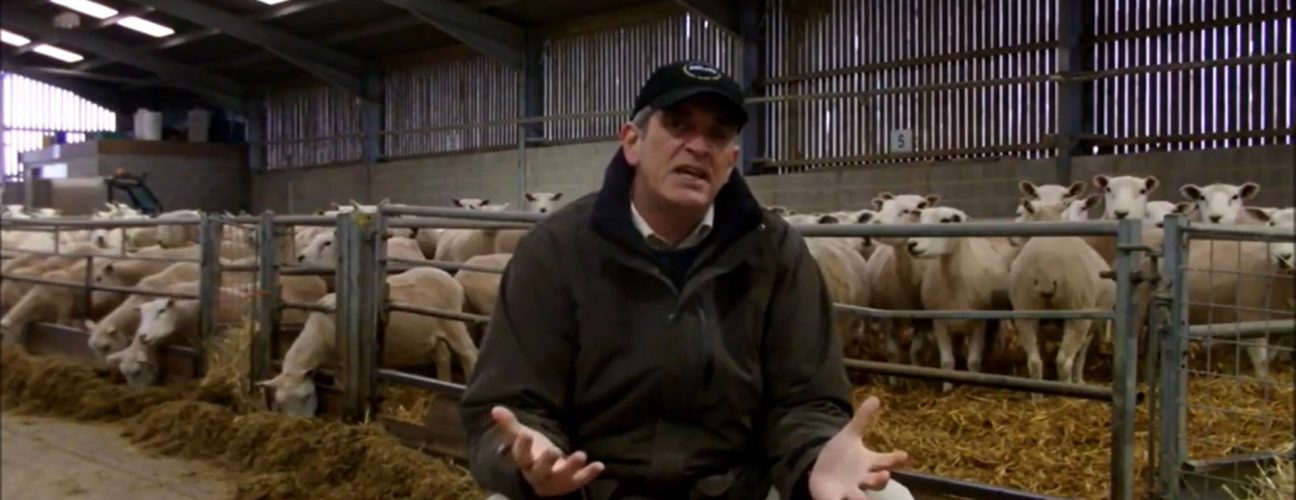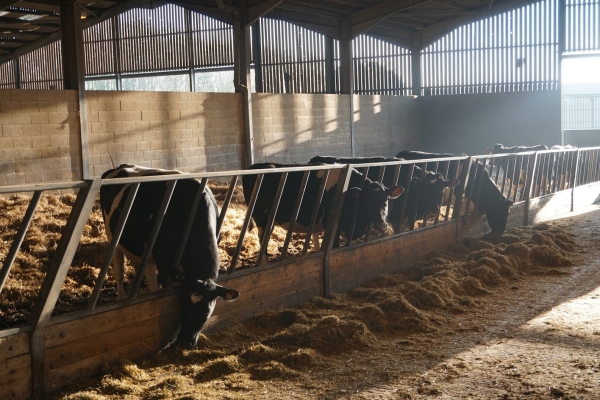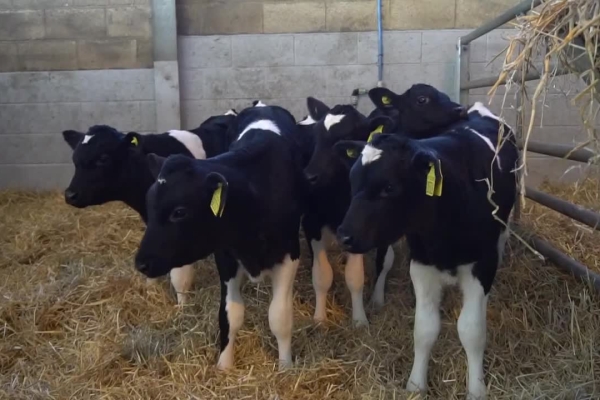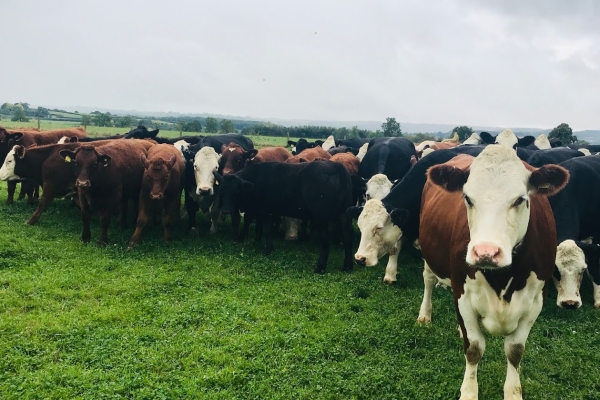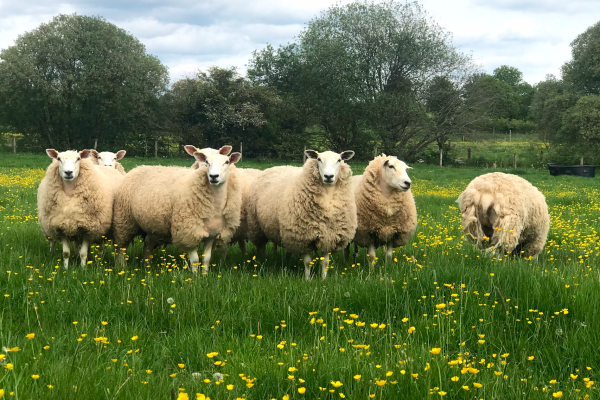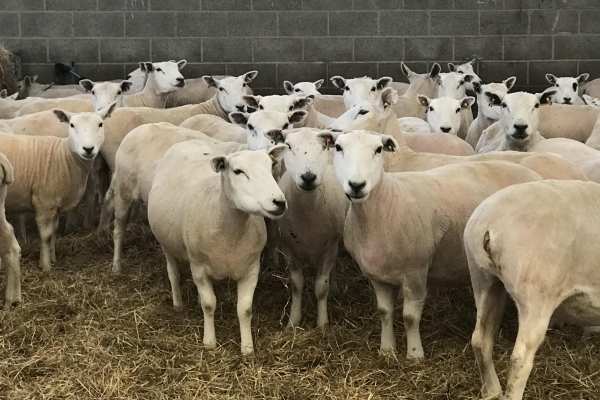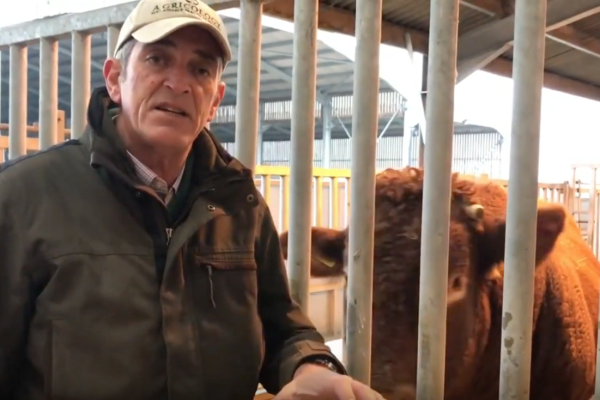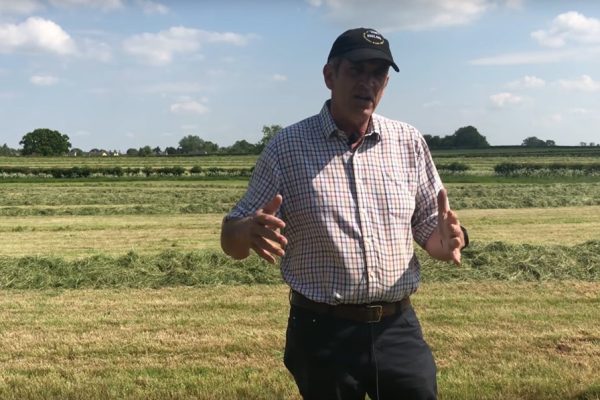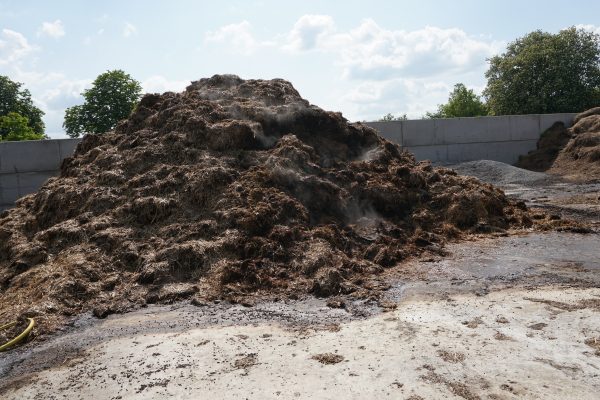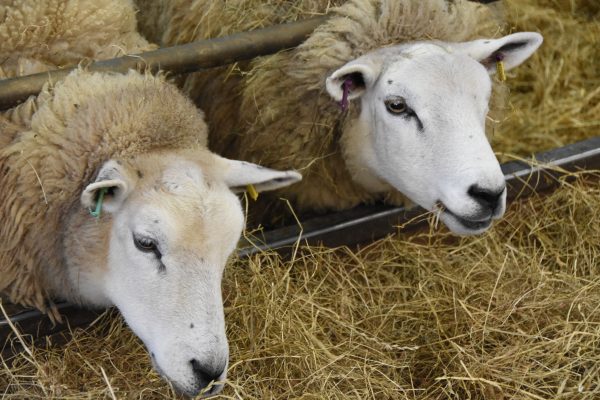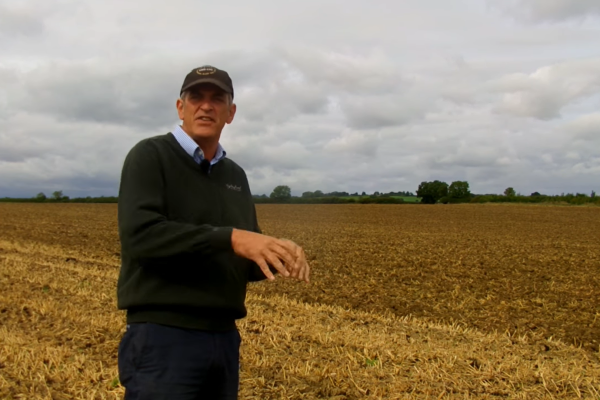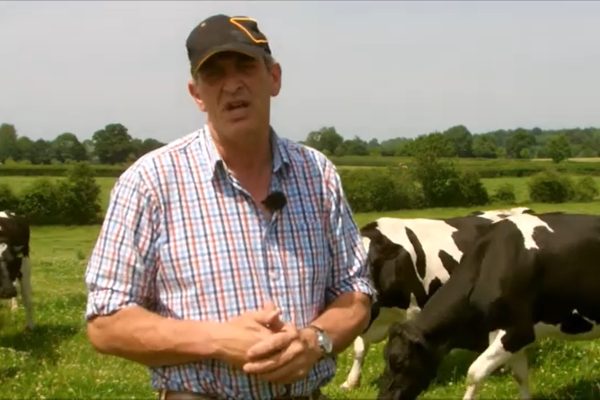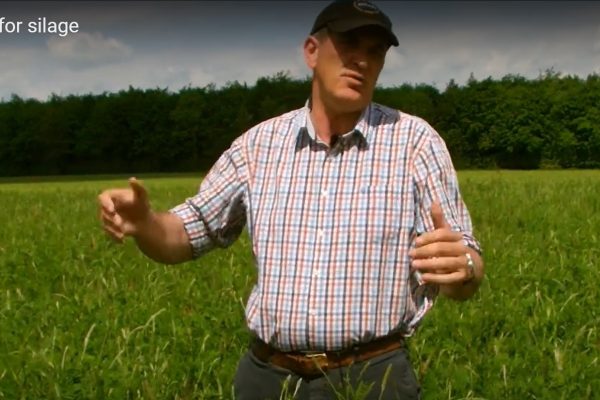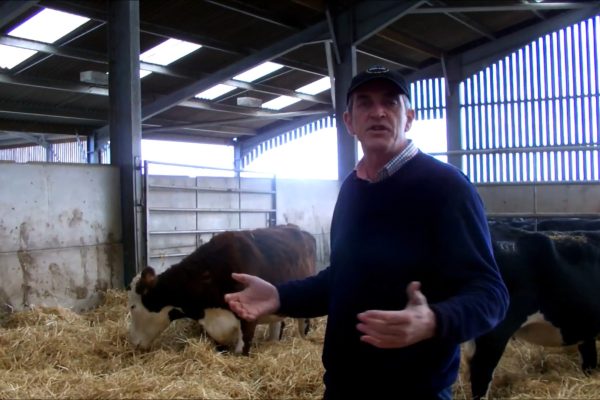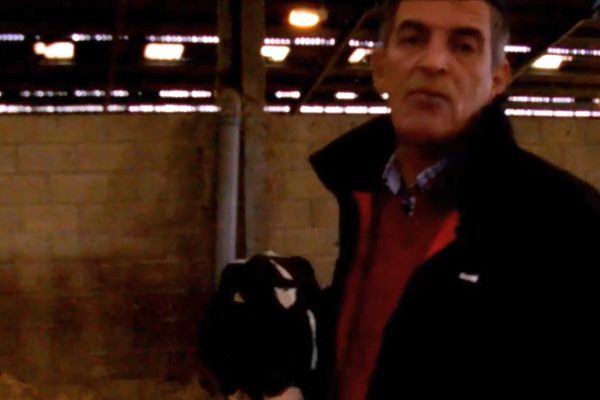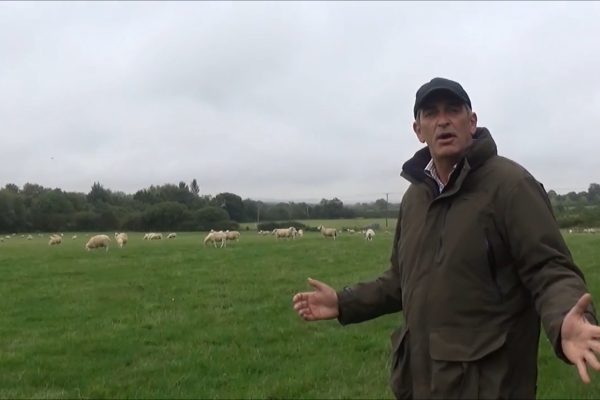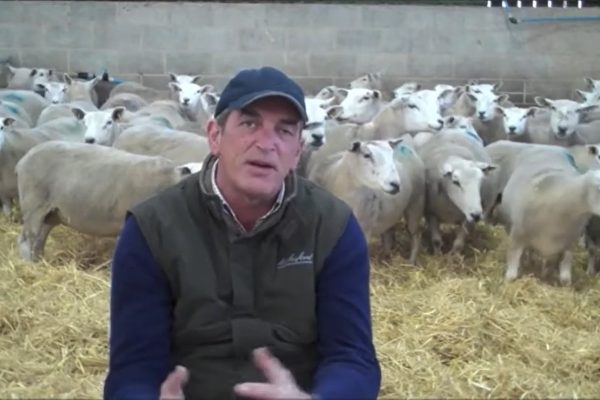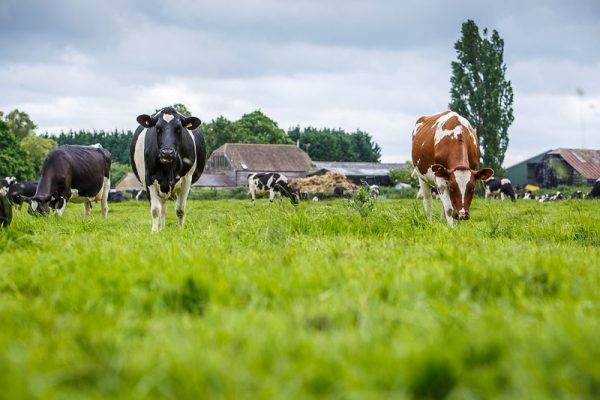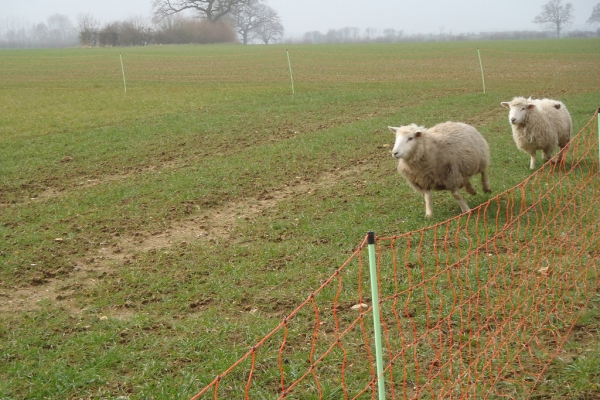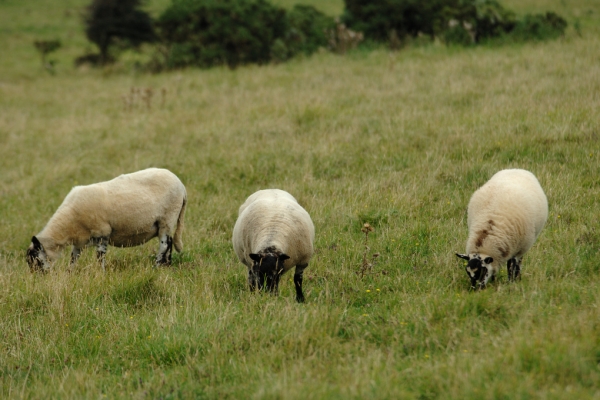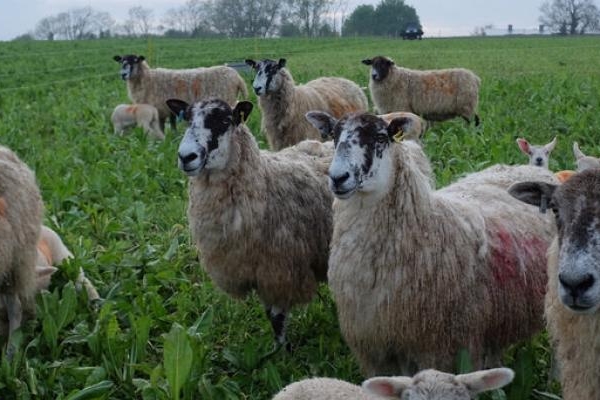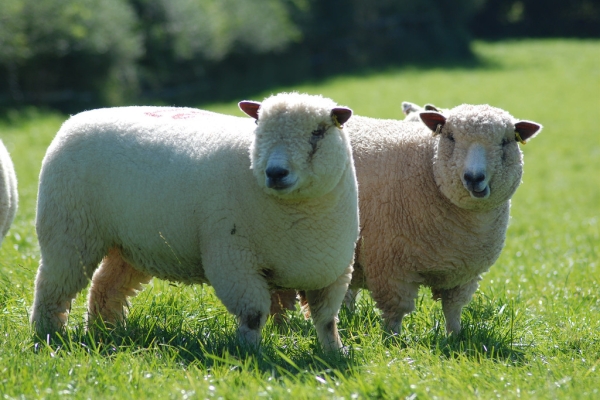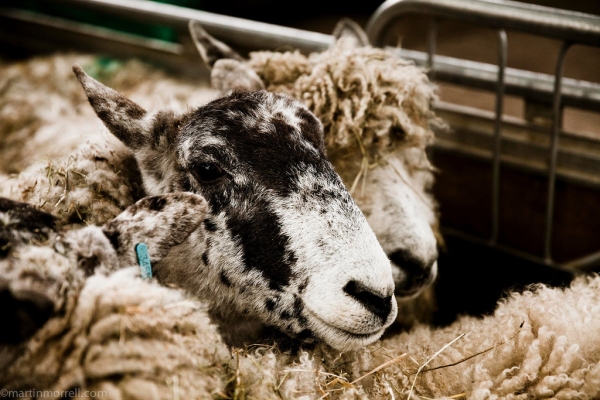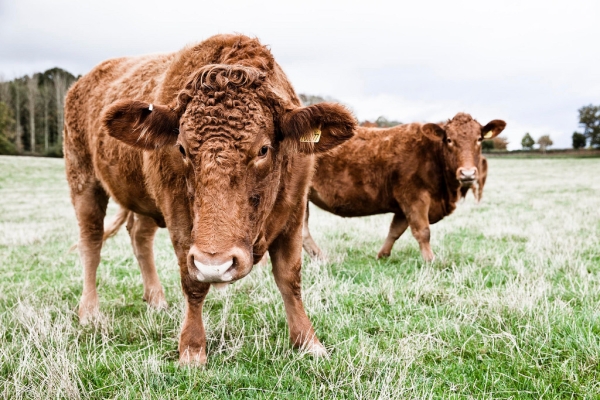Housing and Shearing Sheep in January
This month Richard is in the sheep barn talking about the sheep enterprise at Daylesford.
- Richard lambs 1,250 Lleyn ewes commercially and also lambs 250 pedigree sheep including Kerry Hills, Ryelands and Cotswolds. In the Daylesford system, the sheep are brought in to be housed in January. At this time Richard finds shearing the sheep to be very beneficial.
- Shearing the sheep when they are housed in January can bring many benefits:
- At Daylesford temperatures can go from sub-zero to 10 degrees within a day. This puts a huge strain on the wellbeing and metabolism of the sheep and can result in problems. If the sheep had thick coats they could become overheated and stressed. Richard points out that there are 1,250 sheep in the barn and there is no sound of panting from any of them.
- Shearing in January avoids the stress of shearing in the summer; which can be stressful for the sheep and is a lot of work in getting each mob in and back out again.
- When it comes to lambing time, the lack of wool means you can see everything that is happening and the lambs can suckle more easily.
- Although it may seem strange to shear sheep in the winter, Richard explains that he has found it to be the kindest thing to do.
- Once shorn, the sheep take about 24 hours to build up a new protective covering of grease on their coats. You need to make sure the sheep are comfortable so Richard advices choosing a mild day to shear. He also has a golden rule – the sheep need at least 8 weeks of wool growth before they are turned out again.
- Between each sheep pen in the barn, Richard builds a ‘wall’ of hay, stuffing it into walkthrough troughs. This provides a food source for the sheep whilst reducing drafts through the pens.
- The sheep have ad lib food in front of them. Richard feeds his sheep a good quality silage as well as hay. Access to fresh water is also extremely important. A rainwater harvesting system sends the water into various UV filtering systems before it is pumped back into the sheep barn. This helps to keep the cost of rearing the sheep down.
- The sheep are scanned in the third or fourth week of January. Based on this they are then moved into individual groups of singles, twins and triplets and the empty sheep are also marked up.
- Another issue to look out for and get on top of at this time of year when the sheep are housed is lameness. When in the barn, it is easier to see and treat any lame sheep. Richard explains that they foot bathe the sheep as they come into the barn, and then a second time about 10 days later. This, and careful management and husbandry of the sheep, has meant that he and his team feel in control of lameness.
- The sheep get fresh straw three times a week. The straw is unloaded into the front of the pens, and the sheep gradually pull it towards the back of the pens. This is an effective way of bedding up the sheep and requires minimal time and effort.
- The sheep barn is fitted with curtains/windbreaks which can be pulled down over the doors to keep drafts out. If the weather is sunny and still then the doors will be left open to allow as much fresh air into the barn as possible.
- Richard believes that the Lleyn sheep have adapted to the system he uses extremely well. They are a medium size sheep and produce 100% of the lamb whilst eating a medium amount of food. The Lleyns will lamb at the end of March / beginning of April. In the last third of pregnancy, the nutritional requirements of the sheep increase but this can be kept to a minimum with the Lleyns. By breeding these Lleyns in his system, Richard has made huge efficiencies.
The information contained above reflects the views of the author/s and does not necessarily reflect that of Agricology and its partners.
Related articles
Richard Smith shares some advice for healthy livestock and provides a demonstration of cattle foot trimming at Daylesford Organic Farm.
In this month's Agricology vlog, Richard Smith talks to us about scanning 1,200 Lleyn sheep at Daylesford Organic Farm with Bob Tofield.
Richard Smith, Farms Manager for Daylesford Organic, explains how they rear their Friesian calves to give them the best start.
Richard Smith of Daylesford Organic Farms talks about grass leys and how they put them into stubble, and undersowing into cereal crops
In this month's Agricology vlog, Richard Smith discusses how he monitors the internal parasites of the sheep to reduce the need for drenching.
Richard Smith, Farms Manager at Daylesford Organic, discusses why good breeding can reduce the need for additional inputs when housing sheep over winter.
Richard Smith discusses strategies for choosing a bull, including analysing estimated breeding value to assess lineage and breeding potential.
Richard Smith (Farm Manager at Daylesford Organic Farm) discusses everything sainfoin in this August video blog.
In this month's Agricology vlog, Richard Smith, Senior Farm Manager at Daylesford Organic Farm, discusses the production of grass silage in an organic system.
In this month's Agricology vlog, Richard Smith (Senior Farms Manager at Daylesford Farm) focuses on animal welfare and dairy systems.
Richard Smith, Farm Manager for Daylesford Farm discusses using manure compost in an organic system and the benefits.
In January's Agricology vlog, Richard Smith of Daylesford Farm discusses the forage he uses to feed his flock of commercial Lleyn Sheep.
In September’s vlog Richard Smith from Daylesford Organic Farm talks us through the process of preparing a field to put it back in to grass.
In June's video blog, Richard Smith explains how a sustainable dairy cow has been bred at Daylesford Organic Farm.
This month Richard explains the process of making sainfoin silage at Daylesford. He describes how the crop is mown and stored in the silage pit.
In our February video blog Richard Smith talks about the beef cattle at Daylesford, giving advice on feeding regimes and calving management.
Richard visits the dairy barn to talk about rearing calves on the farm in our December vlog from Daylesford.
Richard Smith discusses how ewes are prepared for tupping at Daylesford Organic Farm in this video blog.
In this June video blog, Richard Smith discusses Sainfoin, reducing anthelmintic use and the recent Agricology Open Day at Daylesford.
Watch our March video blog and meet the commercial flock of Lleyn ewes Richard Smith manages at Daylesford Organic Farm.
Helen Chesshire from the Woodland Trust describes a research study by Bangor University which is using robots to investigate the effect of trees and shelterbelts...
Liz Bowles from the Soil Association explains how livestock can play a role in carbon sequestration and soil health.
Phil Stocker makes an appeal to get upland sheep farming its rightful recognition amongst policy makers and the wider public.
Short video clips by farmer John Pawsey recorded during his quest to integrate sheep with wheat and help improve soil fertility and crop yields.
An excellent review of beef and sheep nutritional research, providing practical recommendations for pasture-based livestock producers.
When shelter is in short supply strategic tree planting makes a real difference. In this case study a Cumbrian farmer shares his experience.
How incorporating sheep within arable farming systems can rejuvenate soils, reduce problem weeds, improve biodiversity, & improve yields from following crops.
Iconic landscape maintenance, environmental support, sustenance of rural communities. And you thought sheep were just about lamb chops!
Recording of an ORFC 2024 session where members of the Pasture for Life-led, five-year, Innovative Farmers field lab on bale grazing share their insights into...
New booklet highlights profitability of 100% grass-fed beef and sheep farming. Farmer case studies show it can be done.
Information on the practical tried and tested FAI solution to help farmers manage and reduce lameness levels in flocks.
This practical guidance looks at the integration of trees in to sheep management systems and the benefits they can bring.
A practical guidance tool to help you get your livestock feed systems right; optimising animal performance and minimising environmental impacts.
How can chicory or plantain add to your sheep and cattle farm? This AHDB Beef & Lamb resource summarises the research and lessons from UK and abroad.
